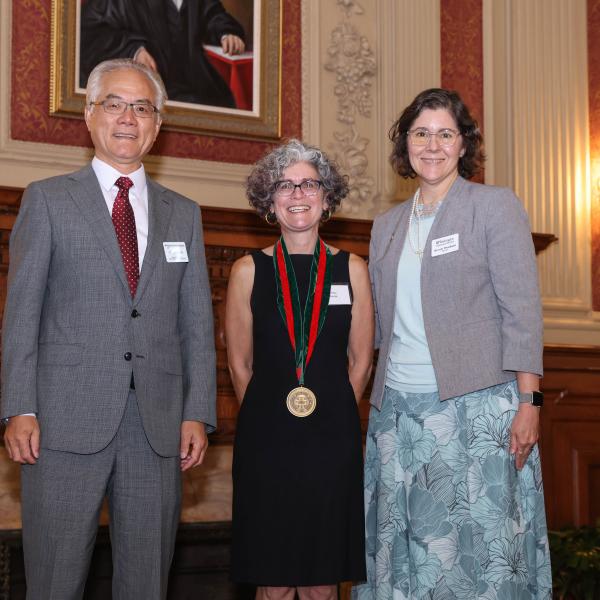Professor Levin's research interests include the temporal and spatial control of cell division, cell size control, and cell cycle dynamics in bacterial systems.
The Levin Lab studies how cells respond to changes in the environment, specifically changes in the availability of essential nutrient, by altering their growth rate, cell shape, and composition. For example, the Levin Lab asks how cells “know” when they are starving for carbon and how they reduce growth rate and daughter cell production to compensate. Because nutrient starvation typically increases the ability of bacteria to survive in the presence of antibiotics, research in the Levin Lab’s will hopefully help us understand how human pathogens are so adept at acquiring antibiotic resistance, a growing crisis in today’s world. What is it about starving that makes cells more resistant to antibiotics and how can we influence this?
Research Interests
Nutrients, cell growth, cell size, and cell cycle progression
Nutrient availability is a primary determinant of cell size. Single-celled organisms cultured in nutrient-rich medium can be up to three times the size of their counterparts cultured under nutrient-poor conditions. Understanding the regulatory circuits and molecular mechanisms responsible for coordinating cell growth and cell size with nutrient availability and cell cycle progression is a primary objective of the lab.
Environmental determinants of antibiotic resistance & tolerance
Bacteria are exquisitely sensitive to their environment, displaying chameleon-like changes in growth rate and composition as they adapt to changes in nutrient availability, osmotic stress, and pH. Growth in nutrient-poor conditions leads to accumulation of the small molecule, guanosine tetraphosphate or ppGpp. A global inhibitor of biosynthesis, ppGpp is implicated in antibiotic tolerance and the development of persister cells that survive for long periods in the presence of bacteriocidal compounds.
Taking advantage of our finding that drugs that inhibit fatty acid synthesis drive entry into a persister-like state, we are systematically identifying ppGpp-dependent mechanisms underlying tolerance to antibiotics targeting DNA replication, cell wall synthesis, and protein synthesis. Levin Lab is also investigating a newly identified link between environmental pH and resistance to cell wall active drugs.
Spatial and Temporal Control of Cell Division
In bacteria, cell division is initiated by the assembly of the tubulin-like cytoskeletal protein FtsZ into a ring-like structure at the future division site. The FtsZ ring serves as a scaffold for assembly of the division machinery and constricts at the leading edge of the invaginating septum during cytokinesis. Precisely orchestrated changes in FtsZ assembly dynamics ensure that bacterial cells divide in the right place and at the right time. However, the signals triggering FtsZ assembly at the onset of the cell cycle and driving FtsZ ring constriction at the end of the cell cycle remain elusive. Identifying the regulatory factors coupling FtsZ assembly and division to cell growth and the cell cycle is a major focus of our research.




